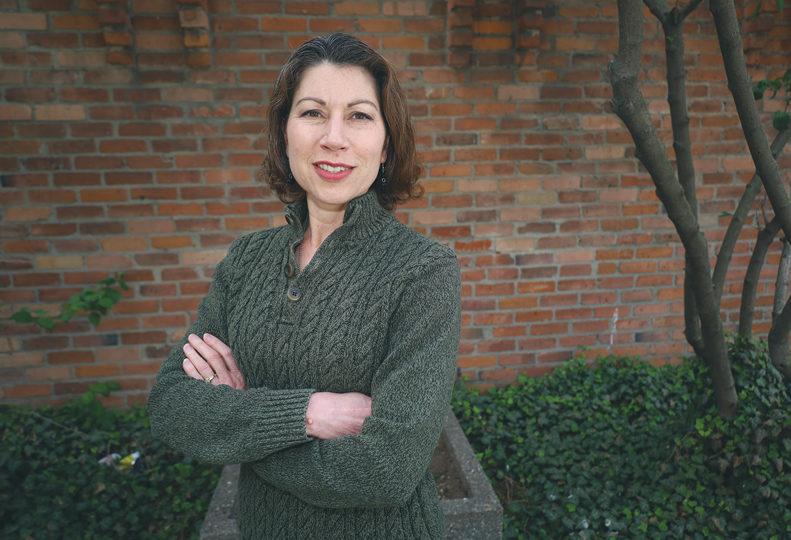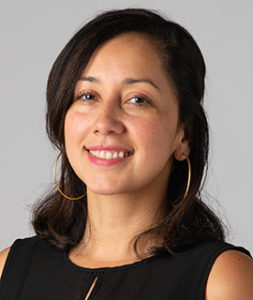
Home » Meet & Greet: Michaele Armstrong, Executive Director, Evergreen Bioscience Innovation Cluster
Meet & Greet: Michaele Armstrong, Executive Director, Evergreen Bioscience Innovation Cluster

Michaele Armstrong has left her position with SP3NW to become the executive director of the Evergreen Bioscience Innovation Cluster.
| Karina EliasMay 9, 2024
The Evergreen Bioscience Innovation Cluster has named Michaele Armstrong as its new executive director, taking the helm from Katrina Rogers, the cluster’s founding CEO and leaving her position with Washington State University’s business incubator, SP3NW.
The organization is a nonprofit formed in partnership with Greater Spokane Incorporated. It is a member-based initiative with the mission to create a magnet for life science research, collaboration, and manufacturing for what Armstrong calls the Mountain Northwest region, which includes Washington, Idaho, Montana, Oregon, and Utah.
The Journal recently met with Armstrong to discuss her transition from SP3NW, what is next for the Evergreen Bioscience Innovation Cluster, and what inspired her passion for life sciences.
Can you tell me about leaving SP3NW?
When SP3NW was launched in December of 2020, one of our earliest funding awards called for focusing on specific goals toward startup support, ecosystem development, and workforce. Our key personnel on the workforce innovation development initiative was Katrina Rogers who was working to bring the bioscience assistant credentialing exam to the state of Washington.
We were successful in that, and out of those efforts a grant was written to the Washington state Department of Commerce to develop a life science accelerator—what is now the Evergreen Bioscience Innovation Cluster. That early formation included Katrina, Stacia Rasmussen (health and life science business development manager for GSI), and because the work is predicated by SP3NW, myself.
The cluster was launched in 2021 with Katrina as the founding CEO. I was on the board as the academic partner for Washington State University. Last month, we received new funding from the Department of Commerce through the Innovation Cluster Accelerator Program Cohort 2 award for $300,000. That award requires a full-time executive director, and Katrina’s CEO role was not full time. Our structure has changed from a board of advisers to a governing board.
I’m really excited for this role, although I’m stepping away from SP3NW, which I love. We’ve been really successful, and SP3NW is poised for growth.
What is next for Evergreen Bioscience?
The latest round of funding from the Department of Commerce will take us through September. One of my big goals is to find future funding. We have some funding through membership fees, and we are also looking for revenue-generating programs. Through our 21st Century Talent Innovation Committee, we are looking at our industry partners and our academic partners to determine what type of training programs are needed.
The second committee is for the Evergreen Bioscience Innovation Building. That committee is working on the next steps in order to more than triple the amount of wet lab space available in the Spokane area. There is a tremendous growing need for this. SP3NW and the wet lab incubator have a wait list of early-stage life science companies looking for wet lab incubation space. We’re looking at some anchor tenant space. Our board will take action on pulling in our real estate representative and finding an anchor tenant who is interested in signing a contract to allow us to bring in a developer.
We are still intent on building the Evergreen Bioscience Innovation Building. We’ve been holding several different interviews to talk with experts about structure, financing, and land use.
What challenges are ahead for Evergreen Bioscience?
One of the challenges is that, while we have a lot of opportunities in the region, we need to have more external communication. Spokane itself is already getting recognition for having a great quality of life and an up-and-coming tech scene. It will be fabulous whenever we are on the national stage as a bioscience center.
The other thing is, of course, the funding. Funding is one of those flywheels; when we see more successes, we will receive more funding and then we will see more successes.
How do you get the word out about the cluster?
One of the ways we’ve seen it recently is through interest from GeekWire.com. GeekWire has done an entire series on Spokane, which is awesome. It gets our name in front of our Seattle peers who don’t like the huge commute, maybe see a lower cost of doing business in Eastern Washington.
The other thing that drives the narrative is folks like those at Greater Spokane Incorporated who take the narrative to trade associations elsewhere and conferences elsewhere. A lot of our work is supported through our partnership with the Health Sciences and Services Authority of Spokane County.
What is the long-term dream for Evergreen Bioscience?
An innovation cluster is regionally based and focused on a particular industry. Ours is the biosciences specific to contract, research, development, and manufacturing throughout the Mountain Northwest. Once we understand what the industry needs are, we can begin to tap those relationships and pull people together to raise the tide. When we do what’s good for industry, it will be good for our capital partners, our academic partners, and for all of our stakeholders.
We recognize that Eastern Washington is an easier place for us to begin to make the change we want, but we also know that we need partners from the entire region. This is a trillion-dollar growth opportunity in the next 10 to 20 years. We are looking at how we can create sustainable and meaningful connections within our ecosystem that begin to draw and grow life sciences to the region and in turn create amazing economic development and opportunity for the people who live in the area.
It sounds like you’ve been thinking about this for a long time, what inspired you to enter this field?
I had an aunt and uncle who lost a baby to cystic fibrosis, a genetic disease. That happened before I was born, but there were many touch points. The one that continued to drive me was witnessing my grandmother’s experience. She worked at a hospital, and due to the work she was doing, she ended up with a liver disease and had to have multiple blood transfusions. I donated blood from the time I was 17. I went on to receive a doctorate in human genetics because of the need I saw in health care.
Why did you leave academia for the private sector?
I was a disciplined (researcher), but that wasn’t the impact that I wanted to see, so I moved from bench research to clinical research. That was great, but it still wasn’t big enough. I decided to go back to school to get my MBA. While I was getting my degree, I began to see everything, including the science I was doing, through the lens of commercialization and market demand and it changed my life. I began to learn how university technologies could move outside of just the peer-reviewed publication and into business. That vision of how research and innovation can become a product or a service, it requires an ecosystem of partners.
Do you see yourself in this role for a long time?
Given my journey, I’m always going to be in the ecosystem of growing life sciences, products, and services. I hope to be a part of this for a long time.
This interview has been edited for length and clarity.
Latest News Health Care Education & Talent Technology Q&A Profiles Instagram
Related Articles





